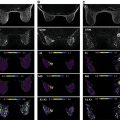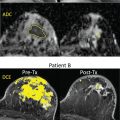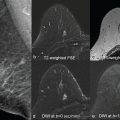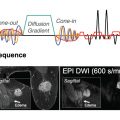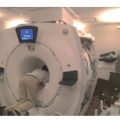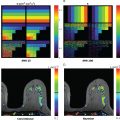At GE Healthcare, we strive to harness the power of magnetic resonance imaging (MRI) to improve breast care. Breast diffusion-weighted imaging (DWI) exemplifies the potential of MRI, combining morphology of physical structure with functional assessment of disease processes. GE breast MRI products include DWI protocols for all scanner configurations on both our 1.5 T and 3 T platforms, and protocols are compatible with 8-channel HD Breast Array, 16-channel InVivo Sentinelle, 16-channel NeoCoil, and 16-channel Rapid breast arrays, which are all available at both 1.5 T and 3 T. For tomorrow and beyond, our scanners are equipped with expanded research capacity and flexibility, as researchers develop the next generation of state-of-the-art breast MRI. Next we will give a high-level overview of the data acquisition, processing, and reconstruction capabilities on GE MR scanners.
Data Acquisition
To ensure the reliability and quality of breast echo-planar DWI (EP-DWI), system gradient and B 0 fidelity are essential. We provide prospective correction for high-order eddy-current effects (Real Time Field Adjustment [RTFA] ) and real-time frequency corrections (Real Time Center Frequency [RTCF] ) to ensure system stability. For object-specific variations, B 0 shimming tools for dual-volume shim prescription and retrospective image distortion correction using reverse polarity gradient approach (PROGRES) are designed to ensure robust image quality for every patient.
Our foundational EP-DWI sequence is the enhanced DWI (eDWI) acquisition. The sequence can be combined with parallel imaging and supports simultaneous-multislice (HyperBand) for increased scan efficiency. HyperBand support is limited to the 16-channel coils due to coil geometry. The eDWI product is designed to provide efficient, flexible, and robust acquisition strategies necessary for diffusion-weighted imaging. For efficiency, the eDWI SmartNEX feature can accommodate multiple b values with different signal averages to ensure that examination time is optimized for each b value. For flexibility, eDWI expands diffusion-direction options to include 3-in-1 and Tetrahedral modes, which use gradient combinations to create diffusion weighting in oblique directions to minimize echo time (TE) and the associated signal loss due to T2 decay. For robust image quality, optional artifact-mitigation strategies include the Dual Echo feature, which combines additional signal refocusing with compensating gradients to correct for eddy-current effects induced by the large gradient waveforms required for DWI. The Optimize TE feature uses intelligent gradient timing to maximize pulse sequence efficiency and reduce TE. For high-performance gradient configurations, the Super G feature allows increased gradient performance for short durations to further reduce TE. Fig. 16.1 shows the user interface for our eDWI sequence, highlighting the variety of tools provided with eDWI.
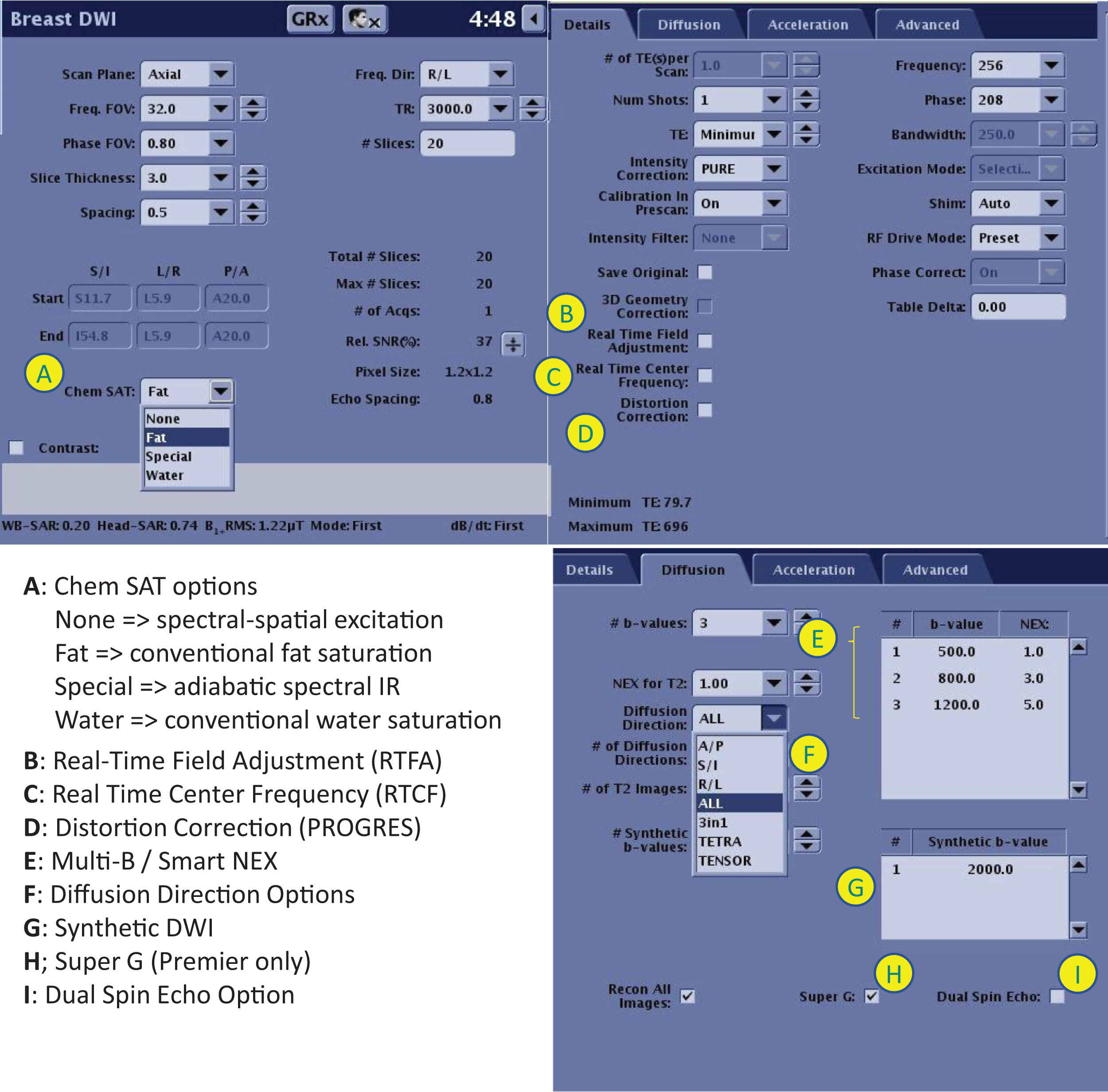
Our EP-DWI portfolio extends beyond the eDWI sequence to address common challenges posed by breast DWI. For large field-of-view (FOV) applications, multiplexed sensitivity-encoding (MUSE) DWI uses a segmented acquisition to reduce image distortion. MUSE employs an interleaved strategy to acquire a subset of the total acquisition, repeated over multiple groupings or “shots.” MUSE supports the full array of fat-suppression techniques used in eDWI as well as diffusion-weighting features and parametric image creation options ( Fig. 16.2 ).


Stay updated, free articles. Join our Telegram channel

Full access? Get Clinical Tree



